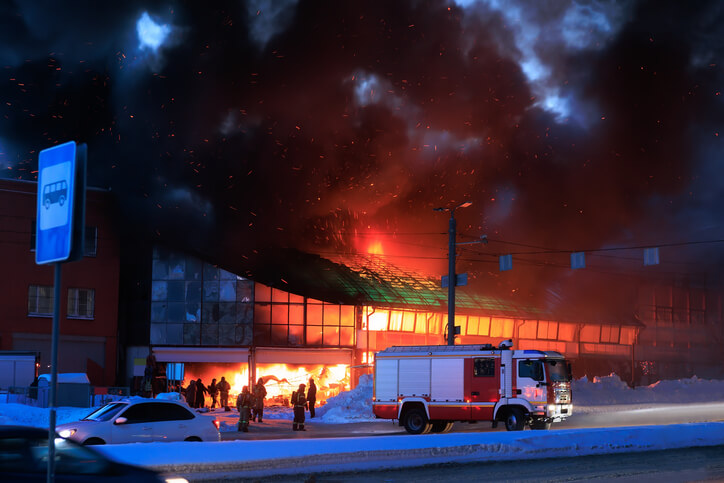Important Statistics and Facts about OSHA 30-Hour Construction training
Keeping workers safe is always one of the most important things on any construction site and for a good reason. Even though there have been big improvements in safety technology and tools for analyzing risks, construction is still one of the most dangerous industries globally.
Since 2008, the construction industry has had more deaths than any other industry, and this count doesn’t even include suicides, which are also the highest in this field. Construction workers face higher rates of injuries compared to many other jobs and are among the top in alcohol abuse. Even if they retire from the job, they still have a higher chance of experiencing hearing loss, mobility issues, and respiratory problems.
Here you will read almost 31 statistics related to construction injuries, illnesses, and hazards that show you why OSHA 30-hour safety training is important to enforce the culture of safety.
- According to data from the Cooper Union for the Advancement of Science and Art, OSHA 30-Hour Construction training is designed to reduce occupational hazards and ensure a safer work environment for construction workers.
- Louisiana Department of Corrections reports that OSHA 30-Hour Construction training significantly reduces workplace accidents and injuries, thus improving overall productivity and efficiency on construction sites.

Fatal Occupational Injuries
1,008 fatal occupational injuries in the year 2020
With 1,008 fatal occupational injuries in the year 2020 has been noticed and the construction sector led all other industries in the US. In addition, the number is not rare. This emphasizes the need to provide training regarding safety regulations and procedures to all construction workers, particularly those in supervisory roles.
Fire Safety
Fleming Construction
Fleming Construction Group highlights a steady increase in the number of individuals opting for OSHA 30-Hour Construction training, indicating growing awareness and commitment to safety protocols within the industry.- Employers in the private sector reported more than two million nonfatal workplace illnesses and injuries in 2020, a 5.7% drop from 2019. Employers in the private sector saw a 21.5% drop in injuries sustained at work in 2020, while the number of health issues and cases more than tripled over that same year.
- In 2020, the United States recorded 4,764 fatalities resulting from work-related incidents. 1,008 people died while working in private construction, which was about 21.2 percent of all deaths. Transportation and warehousing had 805 deaths, which made up around 16.9 percent of the total.
- According to the ILO, approximately 2.3 million men and women worldwide die each year due to work-related accidents or illnesses. This equates to more than 6,000 deaths occurring daily.
Additionally, the total number of work-related injuries requiring medical consultation reached 4.53 million in 2022
In 2022, there was a notable rise in work-related deaths, partly due to a 3.4% increase in working hours. However, other factors also contributed to this increase in fatalities.
The rate of deaths from preventable injuries rose to 3.2 per 100,000 workers, up from 3.1 in 2021.
- Globally, there are about 340 million work-related accidents and 160 million cases of occupational illnesses every year. The ILO periodically revises these estimates, with the updates showing a rise in both accidents and illnesses.
- In 2022, there was a 5% rise in the count of preventable work-related deaths, reaching a total of 4,695. Apart from these fatalities resulting from work injuries, there were 791 incidents of homicides and suicides that took place in the workplace during the same year. It’s important to note that these deliberate injuries are not accounted for in the estimates of preventable injuries.
Between 2021 and 2022, for healthcare practitioners and technical workers
Between 2021 and 2022, for healthcare practitioners and technical workers, 78.6 percent (223,680 cases) of all DART cases meant they had to stay away from work for at least one day. The remaining 21.4 percent (61,020 cases) involved job transfers or restrictions for one or more days. In production occupations, 53.8 percent (223,840 cases) of DART cases required time off work, while the rest, 46.2 percent (192,480 cases), led to job transfers or restrictions.
United States saw a poisoning-related unintentional injury death
According to Statista, in 2021, the United States saw a poisoning-related unintentional injury death rate of 30.7 per 100,000 population. This data represents the rate of unintentional injury deaths categorized by principal type in the United States for both 2020 and 2021.
- In 2022, more workers got sick compared to 2021. In the private sector, there were 45.2 cases of illness per 10,000 full-time workers, up from 37.7 cases in 2021. This increase was mainly because more people had respiratory illnesses. In 2022, there were 35.8 cases of respiratory illnesses per 10,000 full-time workers, up from 27.8 cases in 2021.
Despite general advancements
Despite general advancements, yearly accident data reveals that the construction sector continues to pose significant dangers to workers. Every year, more than 1,000 construction workers lose their lives, and an additional 400,000 experience injuries or illnesses while working at construction sites. As a response, the Secretary of Labor, in collaboration with OSHA, has established precise guidelines tailored for the construction field, outlined in 29 CFR Part 1926.
- Between January and December 2021, Italy recorded 1,361 work accidents resulting in fatalities. Specifically, 1,102 of these fatal accidents happened directly in the workplace, while 259 occurred during the commute to or from work. It’s important to note that deaths attributed to COVID-19 are included in these figures. Additionally, in the same year, the total number of work-related accidents exceeded 564,000 cases.
individuals possessed valid driver’s licenses in the United States
In 2021, approximately 233 million individuals possessed valid driver’s licenses in the United States. Across most states, the minimum age requirement for driving is 16 years old. Interestingly, there are slightly more female license holders compared to male drivers. Certain states are now introducing non-binary gender options on licenses, and there’s an anticipated widespread adoption of digital IDs in the near future.

Traffic Related Deaths Occurred in 2021
47,000 fatalities reported on U.S. roads
Inadequate driving tests and insufficient training are often cited as factors contributing to the high rate of road accidents and fatalities in the United States, in contrast to other nations. The peak in traffic-related deaths occurred in 2021, with almost 47,000 fatalities reported on U.S. roads. Although there has been a slight decline in road traffic fatalities in recent years, the majority of accidents still occur in urban areas, where rural accidents tend to be more fatal.The staggering cost savings associated with safety measures, coupled with the alarming prevalence of construction-related fatalities and injuries, highlight the urgent need for comprehensive safety training initiatives like OSHA 30-Hour Construction. Moreover, the enforcement efforts of OSHA, coupled with advancements in safety technology and increased awareness of mental health and substance abuse issues, further emphasize the multi-faceted approach required to address safety concerns in construction.
Between 2024 and 2029
Between 2024 and 2029, it’s expected that the number of road accidents per one million people in the United States will keep going up. By 2029, it’s predicted to reach a new high of 7,832,52 accidents. This would be a 12.03 percent increase from previous years, making it the twelfth year in a row with more accidents.
The statistics and facts surrounding OSHA 30-Hour Construction training
The statistics and facts surrounding OSHA 30-Hour Construction training underscore its pivotal role in promoting workplace safety within the construction industry. With over 1.3 million workers certified, the program has demonstrated its widespread adoption and effectiveness in reducing job-related injuries and fatalities.
Fatal construction injuries
Fatal construction injuries are approximated to incur a financial burden of $5 billion annually in the United States, encompassing expenses related to healthcare, loss of income, deterioration in the quality of life for family members, and reduced production.
Nonfatal falls amount
Annually, workers’ compensation claims related to nonfatal falls amount to $2.5 billion.
Home Improvement in New York
In 2022, Alj Home Improvement in New York received one of the highest proposed fines for safety violations, totaling $1.3 million.
To Wrap Up the Things
Modern construction managers understand the importance of promoting a safety-focused environment, not only on the construction site but also in administrative areas. Construction software helps workers simplify their tasks by providing easy access to documents like daily logs, safety reports, and site plans, all in one location for project participants. When each worker takes ownership of safety, whether by conducting daily site inspections or analyzing safety data to anticipate future hazards, everyone contributes to making the workplace safer.
At last, it is not wrong if we say continued investment in safety training, regulatory compliance, and worker engagement is imperative to mitigate risks, protect workers’ well-being, and sustain the growth and productivity of the construction industry. OSHA 30-Hour Construction stands as a cornerstone in this endeavor, empowering workers with the knowledge and skills necessary to navigate hazards and ensure a safer work environment for all.
CEO of OSHAOutreachCourses, a platform that provides online workplace safety training. Passionate about the integration of technologies in making worksites safer for manual workers.







